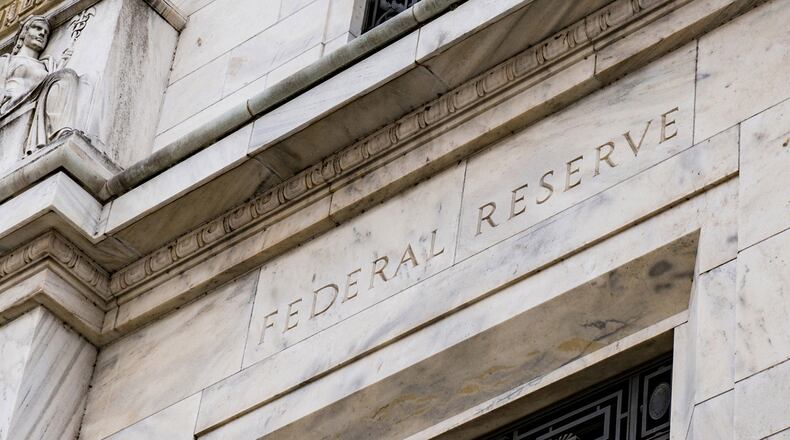You may have noted that this summer’s data showed glimmers of good news on the fight against inflation. The key word is “glimmers.” It’s too early to claim victory as inflation remains much too high.
We understand inflation is causing pain for many Americans. Regaining price stability remains the Federal Reserve’s top priority. It is a key part of the Fed’s monetary policy mandate, and our commitment is unshakable. The Federal Open Market Committee (FOMC) is moving expeditiously to bring inflation back toward our objective of 2 percent as measured by the personal consumption expenditures price index.
Yet getting a handle on today’s economy is challenging. The effects of the pandemic continue to shape macroeconomic conditions. Consider that in just two-and-a-half years, the U.S. economy suffered its sharpest drop in overall output since World War II, followed by a rapid resurgence in demand, a dramatic imbalance between labor supply and demand, widespread supply and shipping constraints and an inflation rate that surged from about 1.5 percent to 9 percent over the past 17 months.
Credit: E. M. Pio Roda / Federal Reserve
Credit: E. M. Pio Roda / Federal Reserve
We’ve been through a lot and economic signals are scrambled.
The broadest measure of activity, gross domestic product (GDP), showed that the economy contracted in the first two quarters of 2022. Anecdotally, our retail contacts tell us higher prices are forcing many low- and moderate-income consumers to curb their spending. Trucking firms are reporting slackening demand.
Other data describe a fundamentally stable economy. Employment growth this year continues strong, averaging 438,000 new jobs a month through August. Moreover, evidence suggests easing supply chain problems. Consumer spending may be shifting toward a more normal mix — away from the heavy concentration in goods we saw early in the pandemic and toward services.
Still, we know we have a fight ahead. Food and rent prices continue to climb, hitting lower-income consumers especially hard. Although goods prices show signs of moderating, core services inflation continues to drift upward and inflation in services tends to be more persistent than goods inflation. (See the Atlanta Fed’s Sticky-Price CPI, which sorts the consumer price index [CPI] into items that change prices frequently and those slower to change.) Finally, while the July CPI showed a slowing in the pace of price increases, it also makes clear that price pressures remain stubbornly widespread.
As the FOMC confronts this immense challenge, I think two questions should frame the policy debate. One, given that we are at or near a neutral policy stance — where monetary policy neither stimulates nor restricts economic growth — what level of rates would be appropriately restrictive? Two, how long will it take monetary policy to affect GDP and inflation?
Arriving at the answers is not straightforward. We must weigh the risk of our policy action from both sides — moving too timidly or too aggressively has downsides.
If we do not move aggressively enough, we risk inflation becoming entrenched in the minds of consumers and business decision makers, increasing the likelihood that inflation will last. How? Workers trying to gird their finances against ongoing inflation may negotiate for ever-higher pay. Firms may in turn raise prices to offset rising labor costs. This could trigger a self-perpetuating “wage-price spiral” like we saw during the Great Inflation of the late 1960s to early 1980s.
Being too aggressive with rate hikes also entails risk. Severe policy tightening can slow economic activity and lead to increased unemployment. Again, those at the lower end of the income and wealth spectrum tend to suffer first and worst.
Be assured, my colleagues and I are acutely aware of the risks our policy decisions carry.
On the second question, it is worth emphasizing that monetary policy — our most effective means to bring inflation under control — does not produce immediate results. Tightening tends to affect other economic indicators such as the housing market, which has already slowed, before it meaningfully influences underlying inflation. That broad impact makes it critical that we pay close attention to all parts of the economy and remain steadfast if inflation doesn’t fall right away.
Although it will take time to see the full effects of the policy adjustments we have made to this point, I don’t think we are done. Our policy stance will need to move into restrictive territory if inflation is to come down expeditiously. That said, if incoming data show clearly that inflation is slowing, we might have reason to dial back from the larger hikes of recent FOMC meetings.
In closing, let me repeat that my FOMC colleagues and I are firmly committed to bringing inflation down while keeping the economy as strong as possible for Americans. These uncertain times call for a risk-management approach to monetary policy. With the harm that higher prices cause and the risk of slower economic growth that accompanies higher interest rates, I will be purposeful and resolute in my view of the appropriate pace of tightening monetary policy.
Raphael Bostic is president and chief executive officer of the Federal Reserve Bank of Atlanta.
About the Author
Keep Reading
The Latest
Featured




